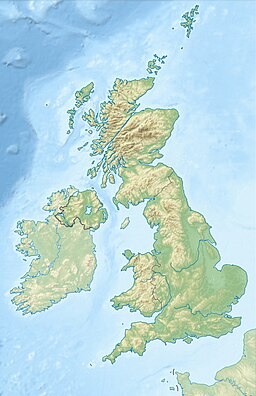Fincham
| Fincham | |
(c) Evelyn Simak, CC BY-SA 2.0 | |
| Land | |
|---|---|
| Riksdel | England |
| Region | Östra England |
| Ceremoniellt grevskap | Norfolk |
| Administrativt grevskap | Norfolk |
| Distrikt | King's Lynn and West Norfolk |
| Koordinater | 52°37′45″N 0°29′36″Ö / 52.6293°N 0.4934°Ö |
| Tidszon | GMT (UTC+0) |
| Riktnummer | 01366 |
| Geonames | 2649446 7294207 |
Fincham är en by och en civil parish i King's Lynn and West Norfolk i Norfolk i England.[1] Orten har 496 invånare (2011).[2] Byn nämndes i Domedagsboken (Domesday Book) år 1086, och kallades då F..ham/P(h)incham.[3]
Referenser
- ^ Ordnance Survey linked data
- ^ ”Neighbourhood statistics”. Arkiverad från originalet den 4 mars 2016. https://web.archive.org/web/20160304222620/http://www.neighbourhood.statistics.gov.uk/dissemination/LeadKeyFigures.do?a=7&b=11123440&c=Fincham&d=16&e=62&g=6449480&i=1001x1003x1032x1004&m=0&r=1&s=1447179205484&enc=1. Läst 10 november 2015.
- ^ The Domesday Book online
Media som används på denna webbplats
Författare/Upphovsman: Alexrk2, Licens: CC BY-SA 3.0
Location map of the United Kingdom
Shiny red button/marker widget. Used to mark the location of something such as a tourist attraction.
(c) Evelyn Simak, CC BY-SA 2.0
St Martin's church illuminated by winter sunlight. The war memorial can be seen in the foreground. St Martin > 1636596 is one of formerly two churches in the village of Fincham. St Michael's church (abandoned in 1745 after the collapse of its tower) used to be situated about 200 metres to the west and after it was pulled down some of it was used to repair St Martin. The church sits on an elevation north of High Street, the main thoroughfare through the village. The building dates mainly from the 15th century but was restored in the mid to late 1800s when the south porch was added. The stained glass windows > 1636627 date from that time also. The vestry on the north side dates from around 1503 and has an extra room above for the use of an assistant priest. The rood screen with its elaborately carved tracery and original painted decoration on the panels > 1636640 is C15. The most notable feature of the church is the magnificent Norman font > 1636645 which came from St Michael's church. It is only one of 13 square Norman fonts that still survive in north-west Norfolk and one of only three which have figures carved on the sides of the bowl. Six boards dating from 1717 and inscribed with texts from the Bible > 1636606 hang on the nave walls. The pulpit and pews were installed in Victorian times.





